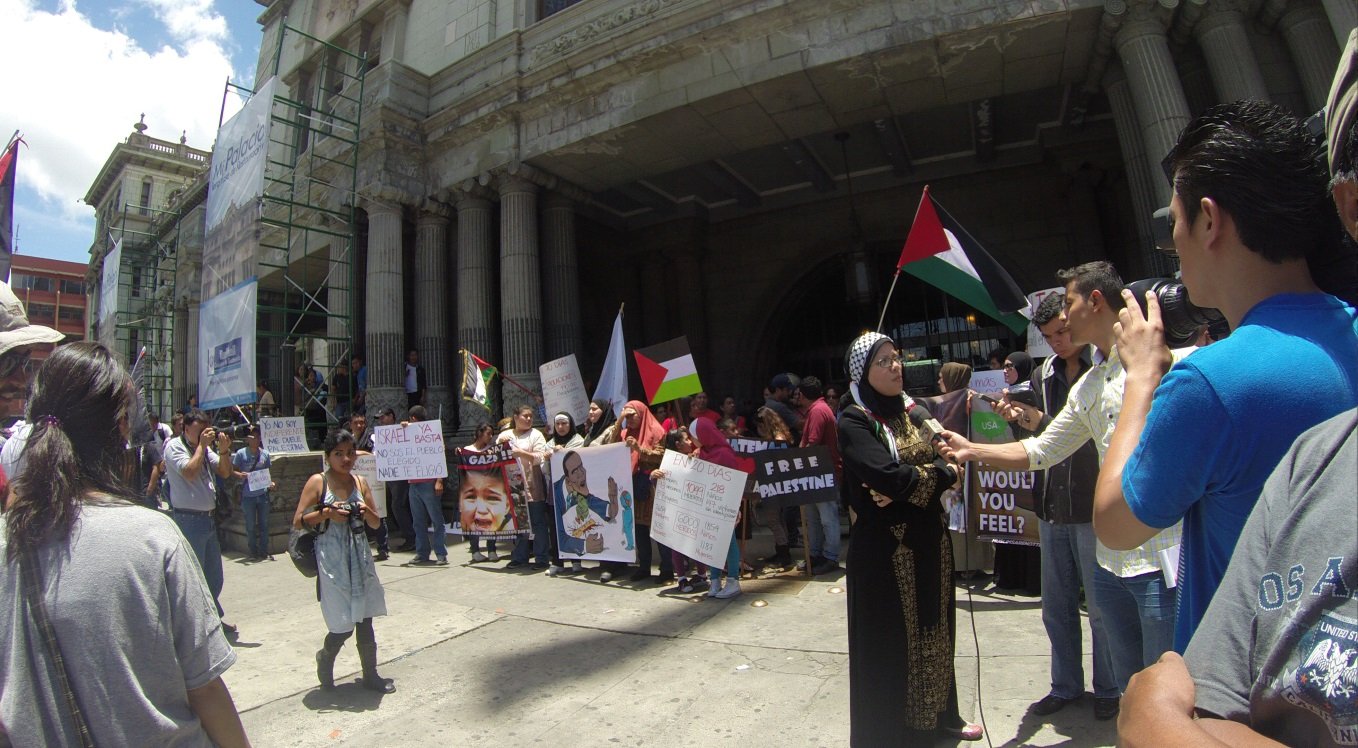Egyptian women and sexual harassment: Restricting social justice by conforming to gender stereotypes and expectations
In light of the Arab Spring, the Egyptian people have been struggling to obtain political, social and economic stability. Through this struggle, sexual harassment has become a popular topic of discussion when assessing Egypt’s progression in relation to the international community. This article attempts to briefly examine how women may restrict the social justice they seek by conforming to gender stereotyping, expectations and socialization.
By Shirley (Hsueh Li) Wang
In light of January 25th, 2011, Egypt has been under constant scrutiny from watchful national and international eyes. From its unexpected social mobilization to its political roller coaster ride, Egypt remains in constant motion when seeking political and social justice. One main area of focus has been gender-based violence, with particular emphasis on women and sexual harassment. As reported by a UN Women survey, 99.3% of women have expressed being sexually harassed either verbally or physically. Additionally, as portrayed in a plethora of local and international media and NGOs reports, public gatherings and protests that followed 2011 have resulted in an increase of sexual harassment, assault and rape cases against women. As a result, grassroots mobilizations within Egypt coupled with international support have pushed for stricter laws against gender-based violence.
Under current President Abdel Fattah al-Sisi’s lead, as an attempt to stop sexual harassment, the Egyptian Penal Code presently contains two main articles that seek to reprimand harassers and provide justice for victims. Accordingly to the law, sexual harassment includes verbal, behavioral, phone, and online harassment. Articles 306 (a) and (b) of the Penal Code categorize sexual harassment as a crime that is punishable from six months to five years imprisonment and a maximum fine of EGP 50,000 (approximately $7,000 USD). Additionally, articles 267, 268 and 278, which address public indecency can also be used for physical sexual harassment and violence. Although many see the law as a first-step towards eliminating sexual harassment, it is not without limitation. Critics question the government’s ability to enforce the law and the reliability of gathering and presenting substantial evidence during prosecution.
When addressing sexual harassment, the media often portray men as perpetrators and women as victims, which suggest a need to establish stricter laws to penalize harassers and protect and elevate the status of women. This belief is supported by various NGOs and UN affiliated organizations such HarassMap, Welad El Balad (The Country’s Children), Nazra for Feminist Studies, Human Rights Watch, and UN Women to name a few. In an attempt to gain a more holistic understanding of how Egyptians view sexual harassment, twenty interviews were conducted to gain further insight into the preconceived notions of gender roles and expectations, reasons and justifications, and potential solutions.
After conducting interviews[1] with ten women and ten men between the ages of 18-45, the perceptions and beliefs held by participants both reiterate and question the current understanding, attitudes and motivations of sexual harassment as dictated by the media. Each interview began with the initial question, “Take into consideration ‘who’, ‘what’, ‘when’ and ‘how’, please define ‘sexual harassment’.” All responses supported media reports and publications as participants identified sexual harassment as being a verbal, physical or visual action that could escalate to sexual violence, assault or rape depending on the individuals involved. Harassers could either expose themselves in public, touch or grab the other person, verbally express – with words, noise or catcalls, or insinuate sexual interest through their gaze or stare. Participants agreed that harassers could act individually or in groups and immediately identified the harasser as being male and the victim as female. Only two participants, Zeinab and Zaki, stated that a harasser could also be female; Dina and Ramez acknowledged the possibility but expressed that the likelihood that a woman would be a harasser would be extremely minimal given the woman’s status and role in society. Only Ramez stated that harassment is not limited to opposite-sex interactions but rather, in crowded public spaces such as bus and metro line transportation, some men could sexually harass other men by exposing himself or physically touching the other, possibly due to homosexual tendencies or preference.
What is interesting in the participants’ responses is how they comprehend the causes and justifications of sexual harassment. Responses regarding the main or dominant causes for sexual harassment can be grouped into the following: sexual frustration, lack of proper education, media portrayal of women, and a weak legal system. Participants expressed that in Egypt, not only is premarital relations and sex, socially and culturally (or religiously) unacceptable, the topic or discussion of sex is also considered taboo and off limits. As such, most people are unable to relieve sexual tensions given marriage is a prerequisite. In order to get married, high social expectations for men to obtain financial security leave many men wanting but unable to fulfill due to economic instability. Thus, leaving individuals in prolonged periods of dissatisfaction and sexual frustration, which manifests as sexual harassment as a form of outward relief. Moreover, without a safe venue to discuss and express their dissatisfaction, many resort to alternative ways of acquiring knowledge of sex and health education from the Internet, pornography, and the media (e.g. news, magazines, movies, and television shows).
When one considers the portrayal of women and men from these sources, both sexes are overly objectified for their physical attributes and stereotyped personal characteristics. For instance, television channels that feature English-language or foreign movies and shows such as MBC Action, MBC MAX, Dubai One, Fox Series, and MTV Arabia, portray women as being overly sexed. To be fair, it is important to acknowledge at this point, that all movies shown in Egypt have been screened where inappropriate scenes that involve sex, excessive kissing or homosexuality have been cut. However, movies and television shows also portray behaviors. In many films and television shows women wear a variety of clothing that either cover some or reveal significant portions of their body. Additionally, the behaviors of women portrayed either insinuate “easy access” or emphasize sex by reiterating the focus on woman’s body and clothing and their docile behavior and desire to be dominated (e.g. Friends with Benefits and The Ugly Truth). Similarly, the media portray men by emphasizing personal characteristics. Men who successfully obtain the woman of their choice are usually assertive, aggressive, and dominate (e.g. Shooter and Sin City). Men are generally in a position of power to make decisions and those who do not fit the mold are emasculated and seen as less of a man.
Furthermore, with Internet access, women and men are free to explore a plethora of information, including pornography at the privacy of their own homes. As expressed by eight of the ten male participants, pornography played a vital role in how they acquired knowledge about sex and women. During their teen years they remembered spending countless hours on the Internet exploring and exchanging different categories of pornographic films with each other. When asked if they have ever harassed a woman, six of the eight men admitted to doing so as teenagers, explaining that they thought women would find it attractive or enticing like the scenes in movies. They also expressed that the act of engaging in verbal or physical harassment also gave them a rush of energy and the feeling of excitement and power.
In a country where the mass majority of the population are not acquainted with a safe and open environment to discuss sex, media portrayal of women and men become an important factor in shaping an individual’s understanding of the act of and behaviors regarding sex. It did not come as a surprise that eighteen of the twenty participants either attributed or referenced a woman’s outer appearance (e.g. clothing, make-up) and perceived behavior as being a motivator for sexual harassment. Only Zeinab and Dina staunchly stated that these qualities are falsely believed by the mass public as it a means to exonerate personal responsibility.
The reasons addressed above are not new. However, in light of January 2011, there has been a movement from Egyptians to focus on the role of the government and legislation as being the main source to dispense or implement justice. As previously mentioned, the current Penal Code has incorporated articles to address sexual harassment but critics are wary, as legal enforcement is neither consistent nor perceived as fair. When participants were asked to reflect on the current sexual harassment articles in the Penal Code, fourteen (five women and nine men) believed the initiative a good start but questioned whether the laws are severe enough to affect the mentalities of the people. Dina, Salma and Sara found monetary fines and imprisonment to be a joke as the harasser often leaves the victim psychological and emotionally damaged. When asked what would be a suitable punishment, all three women expressed depending on the severity of harassment (e.g. verbal or physical), life imprisonment or castration would be more effective in scaring the people. The remaining six (five women and one man) merely proposed that more laws should be ratified to specify monetary fines and imprisonment sentences by the severity of the harassment. For instance, if harassment is verbal as opposed to physical, the monetary fine would be lower; whereas, if harassment is physical and violent, the harasser would be imprisoned for an “x” amount of time in additional to a higher monetary fine. When asked how the government would enforce stricter laws, they simply believed that it would take time and that changes would also have to be made to other institutions such as education to mend attitudes and perceptions.
Even though all twenty participants were wary and, to some extent, uncertain about the role and effectiveness of the government and law, when asked to suggest an alternative solution, most of the participants were unsure how justice could manifest outside of government and legislation. Seventeen participants reiterated the woman’s appearance and behavior as being an instigator for harassers. After which, they proceeded to examine how poor education and public movement towards a more religiously conservative community would lead to the misconstrued notion that a woman’s physical attributes and behaviors would serve as an indicator for her character and willingness to accept solicitations. Following this point, fifteen participants (ten men and five women) added that women should be more proactive by taking self-defense or martial arts courses. Similarly, two male participants stated that men should play a more proactive role by speaking against harassers rather than stand idly by. Only one participant, Zeinab, proposed a reexamination of women’s roles within the family and public sphere.
The main critique and focus of Zeinab’s proposal for reexamining women’s roles is rooted in how the general public (e.g. individuals, media, and organizations) views the role of women especially when addressing sexual harassment. As elaborated earlier, women are often portrayed as the victim. Zeinab explains to view the woman as a passive victim or recipient is not only inaccurate but it also neglects to consider the active role women play in shaping and perpetuating gender misconceptions. For instance, within the family, mothers often warn their daughters about their physical image and behavior. Girls are told to be “good girls” by dressing modestly and through decent and respectable behaviors. Counterexamples of bad dress and conduct are used to caution girls against potential consequences (e.g. damage to reputation, undesirable for marriage, sexual harassment, and violence). Similarly, mothers encourage boys to marry “good girls” in order to have a respectable family. If mothers utilize the power of words and imagery to instill a concrete image of what it means to be a “good” and “bad” girl/woman by addressing her physical appearance and behavior, both sexes will grow up to define and recognize a woman’s worth and value by those attributes.
Zeinab also adds, as girls and women socialize with their colleagues and peers, they often verbally criticize or commend each other on their physical appearances and behaviors. Comments are often directed at a woman’s weight, hair, cosmetics usage, clothing, and her interactions with others. Zeinab suggests that these types of verbal exchanges are not seen as harassment (sexual or nonsexual). Instead, it is an accepted characteristic of being a woman; women like to gossip. In both instances, women play an active role (knowingly or unknowingly) in restricting the social rights and justice they seek because the concept of a woman’s worth has been intrinsically linked to physical appearance and behavior. To reverse the socialization or to unlearn what has already been learned is nearly impossible.
To conclude, I propose the following questions for further thought. In contemplating the role and function of gender, society, and law when addressing the perpetuation of sexual harassment in Egypt, how might one revisit the definition and causes of this social phenomenon? What type of justice is being sought and who or what is responsible for the implementation and maintenance of this justice? If society is a collectivity of individuals, but justice is only understood to stem from the government and legislation, then what happens to individual accountability? Are men the only perpetrators of sexual harassment, or do women also play a role through socialization?
[1] All interviewee names have been changed to pseudonyms to protect their identity and ensure confidentiality.
Shirley (Hsueh Li) Wang is a critical theorist and advocate for disadvantaged children. Born in Taipei, Taiwan and raised in California, she received her master’s in Gender and Women’s Studies with a specialization in Gender and Justice from the American University in Cairo (Egypt) and her bachelor’s degrees in English, Philosophy, and Sociology from California Lutheran University. With a special interest in the philosophical implications of justice and its manifestations within society, she enjoys critically deconstructing social phenomenon in an attempt to understand complex human relationships.






Do you want to copy articles from other sources rewrite them in seconds and post
on your blog or use for contextual backlinks? You can save a lot of writing work, just
search in google:
rheumale’s rewriter